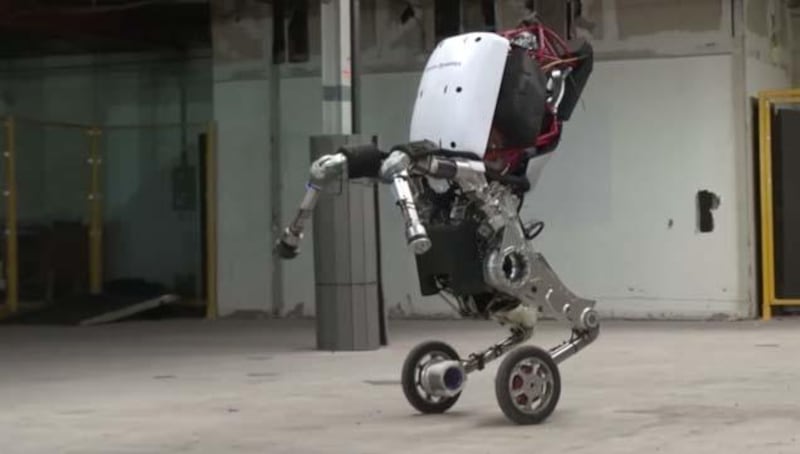Visitors to the Sydney office of JLL are met at reception these days by a helpful recruit who is particularly good at recognising colleagues and clients, and adept at contacting hosts and processing deliveries. The 57in tall JiLL is a robot with inbuilt facial recognition software, enabling it to greet visitors and carry out a range of administrative tasks.
Could a bot such as JiLL handle irony, however, or react well to inappropriate behaviour?
Not right now, perhaps, but this is exactly the type of advance that could someday blur the lines between humans and machines in the workplace. There are implications for productivity, security, employment and ethics amongst other things. Alexandra Levit ranges over this fascinating subject in her new book Humanity Works.
Levit believes that the world in which machines will replace humans is a long way off, but sees an interesting and evolving landscape.
"When people talk about jobs being replaced by machines, they are essentially talking about tasks. Law provides a good example. Technology has taken the drudgery out of painstaking research involved in a case, but we are still at the point where the lawyer argues the case in court," she tells The Irish Times.
Levit says she talked recently to a large Fortune 500 company in the pharmaceutical industry that was developing a customised chatbot for on-boarding its new employees. Twenty people were involved in building the machine.
“Wherever there is machine, there are going to be a lot of humans creating, monitoring, maintaining. Whole new roles will be created in the process in areas such as managing the related ethical issues,” she says.
Automated knitting machine
Fears about technology replacing jobs are nothing new. As Levit notes, as far back as the time of Queen Elizabeth I’s reign, the monarch refused to grant William Lee’s patent for an automated knitting machine because she feared for “the young maidens who would be reduced to starvation”. The fears ultimately proved unfounded as, by the time of the Industrial Revolution, advanced weaving technology had created nearly four times as many jobs in weaving factories.
Nonetheless, the goalposts are shifting rapidly. So-called “affective computing” – which trains machines to detect more nuanced human communication – is advancing quickly, and some solutions have already come to market. A Tel-Aviv-based firm, Beyond Verbal, described as an “emotions analytics company”, has developed software that can identify feelings conveyed by intonations in the human voice, meaning that robots can now judge the mood and frame of mind of a person interacting with them.

The bots have other advantages. Humans often exhibit unconscious bias whereas machines don’t – albeit humans might programme some bias into the machine. Levit sees obvious benefits in areas such as employee selection, where it could help overcome diversity-related discrimination issues, for example.
Virtual meeting
Advances in virtual reality mean that professionals can now easily be in places that they previously couldn’t, at least in virtual form. An avatar version can attend a meeting thousands of miles away, providing opportunities for cross-cultural interaction at a level beyond video-conferencing.
There is potential 'Wild West' around intellectual property and ethics. A lot of issues will come up
Levit cites an example in the book of Emily Dreyfuss, an executive who created a robot version of herself with an iPad screen. This facilitated her alter-ego to walk around a remote office and see and interact with colleagues. The solution wasn't perfect, however, and Dreyfuss reported uneasy feelings when colleagues picked up and touched her.
This raises of host of new issues.
“There is potential ‘Wild West’ around intellectual property and ethics. A lot of issues will come up. Who owns the virtual version of ourselves, given, for example, that it was created on company time?” Levit asks.
Levit feels a blended solution of virtual reality and face-to-face interaction is the one that offers most promise. “The technology is going to allow us to do great things but, ultimately, there is no substitute for human interaction. If you have never met your colleagues in person that’s going to be problematic.”
Humanity Works by Alexandra Levit is published by Kogan Page
Clicking in: How tech will change the workplace
Personal Assistants
By 2030, your MasterBot will be able to look over your shoulder and advise if an irate message you are typing to a colleague is "over-the top". Google is currently working on this.
Recruitment
Big data will scour and identify passive candidates on sites such as LinkedIn, remove unconscious bias in selection and predict the likelihood of employee success by capturing certain traits on video.
Pay negotiations
Instead of sitting down with a human, an employee might converse with a salary negotiation robot that has access to the employee's performance data and the ability to read her levels of confidence, uncertainty, embarrassment and frustration.
Customer service
Bots will interact with huge numbers of people at the same time, leading to faster response times and issue resolutions.
Nagging your reports
Bots will chase up unresolved queries to co-workers. Since the bot will reach out cheerfully until the task is completed, there will be no escalation of negativity.












